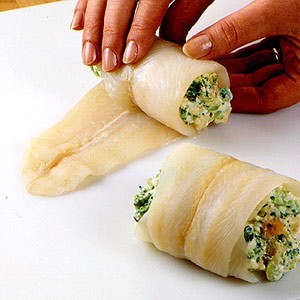Check out local events in San Antonio!
http://calendar.sacurrent.com/Events/Default.aspx
Monthly Archives: October 2013
San Antonio November Events Calendar
Posted in San Antonio Events
Corpus Christi November Event Calendar
Check out local events in the Corpus Christi area.
http://www.caller.com/events/
Posted in Corpus Christi Events
Infant Massage Techniques
Infant massage promotes the bond between parent and helps your baby relax. Because massage is so beneficial to both baby and parent, it’s become a part of the bedtime routine for a lot of families, but it can be done at any time of day to ease a tummy ache, increase circulation, or soothe a tired, cranky baby. Here are a few massages to try incorporating into your routine with baby every day.
Stomach
Infants sometimes wake in the middle of the night with horrible gas pains. Making a gentle tummy massage routine, along with a leg lift to the chest can help your baby expel gas to reduce stomach ache.
To massage the stomach, place your hands above baby’s belly button, then lightly begin to massage around the belly button to create a circle. Repeat as needed and adjust pressure based on your child and the amount of gas pain she’s experiencing.
Legs and Feet
After massaging your baby’s stomach, begin to rub her feet and legs using a circular motion to the feet. If she has painful gas, you may need to alternate between a leg massage and stomach massage to release some of the gas. Simply hold your baby’s legs at her feet and press down toward her stomach, then release.
A great foot massage can calm baby’s nerves. Even if you don’t have massage oil, rubbing baby’s feet while you hold her can be very beneficial to her sense of comfort. While holding your baby’s foot in your hand, place your thumbs next to each other at baby’s heel. Rub with light pressure in an upward and circular motion with both thumbs until you reach baby’s toes. Continue to massage and lightly lift each toe, then move on to the next foot.
Chest
Some parents begin their massage session at the chest. Start under your child’s chin and gently massage in a heart shape, moving up to the shoulders then down to the lower chest. Some babies don’t like this massage, while others do — you’ll learn this about your little one soon enough.
Arms and Hands
After massaging your baby’s chest, make your way down the side of her left shoulder and rub her arm using your thumbs. Once you reach her hand, move your thumbs in a circular and upward motion in the palms of baby’s hand toward her fingers. Then massage and each finger. Repeat massage on the right side.
Though massaging baby’s arm may not always be necessary, massaging your baby’s hand either by rubbing her palm with your thumb or simply holding her hand can promote bonding and security.
Back
To massage baby’s back, start at her shoulders and move your hands away from one another then down to create a heart shape. Continue in a straight line down the rest of her back. Depending on your baby, you can continue to massage her back in a circular motion with your hands or using just your thumbs.
When rubbing your baby’s back, be careful of her head and neck, and be sure that her head is either turned to the side for breathing, or that she’s old enough to hold her head up for the minute or so you rub her back
Head
There are several different massages you can try for your baby’s head. Which massage you choose to use depends on the age/development of your baby and what she prefers. Always be careful around the soft spot on baby’s head.
Using the tips of your fingers, gently massage baby’s face starting from between her eyebrows. Move your fingers up above her brows and down along the sides of her head. Feel her earlobes and massage the ends.
Other massages to try on the head and face are an eye massage where you use your middle finger to lightly trace the circle around baby’s eyes, and rubbing your palm down over baby’s forehead to her eyelids to encourage rest.
Posted in Healthy Lifestyle
Stress and the Immune System
Have you found yourself under stress then the onset of illness? According to study, research shows that stress and the immune system work hand-in-hand.
How to reduce the wear, tear, and misery that the upcoming holiday stress can inflict? Finding ways to reduce your anxiety may reduce your risk of:
-Heart disease, including heart attacks
-Skin conditions, including psoriasis and shingles
-Digestive disorder flare-ups, such as symptoms of irritable bowel syndrome, ulcerative colitis, and Crohn’s disease
-Immune disorders, including flare-ups of multiple sclerosis and lupus
-Anxiety, depression, and insomnia
-Worsening pain, if you already have a pain disorder such as arthritis, back pain, and muscle spasms
Finding ways to help reduce stress are essential. Tapping into your senses can help in many ways.
The power of massage is proven to help eliminate stress. Call Body-N-Balance to schedule your therapeutic massage today!
Omni Hotel, Corpus Christi: 361-887-1600
Omni, Hotel, San Antonio: 210-699-5969
Posted in Healthy Lifestyle
Broccoli and Cheese Stuffed Tilapia
Broccoli and cheese Stuffed tilapia

Ingredients:
•4-ouncefresh or frozen skinless sole, flounder, or other fish fillets, about 1/4 inch thick
•1 cupfrozen cut broccoli, thawed
•1 beaten egg
•1 8-ounce containersoft-style cream cheese with chives and onion
•1/4 cupgrated Parmesan cheese
•3/4 cupherb-seasoned stuffing mix
•2 tablespoonsmilk
•2 tablespoonsdry white wine
Instructions:
1. Thaw fish, if frozen. Rinse fish and pat dry with paper towels. For stuffing, drain broccoli, pressing out excess liquid. Combine egg, half of the cream cheese, and the Parmesan cheese. Stir in broccoli and stuffing mix. Spoon one-fourth of the stuffing onto an end of each fillet. Roll up, securing rolls with wooden toothpicks. Place fish in a greased 2-quart square baking dish. Bake, covered, in a 350 degree F oven for 30 to 35 minutes or until fish flakes easily with a fork and stuffing is hot.
2. Meanwhile, for sauce, in a small saucepan cook remaining cream cheese, milk, and wine until heated through, stirring often. Serve sauce over fish. Makes 4 servings.
Posted in Recipes


Recent Comments